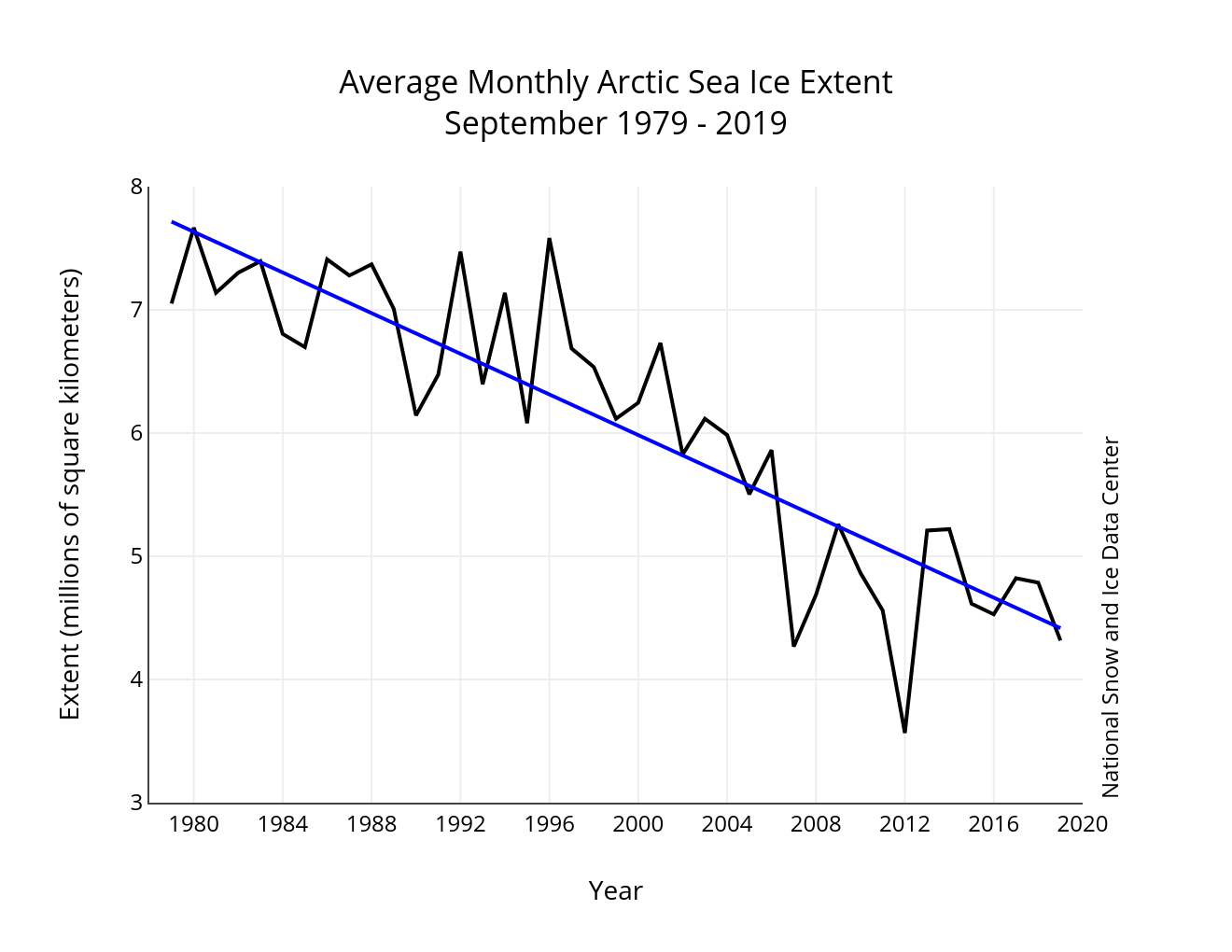The data points are the September (minimum Arctic Sea Ice month) averages for Sea Ice Extent during the satellite era (1979-2019). Keep in mind the points plotted are not the sea ice minima, but the average SIE for the entire minimum month. This tends to smooth out a lot of the day to day and year to year variation.
You will note the regression drops from approximately 7.75 million sq km
to 4.5 million sq km in 40 years, a loss of 3.25 million km sq (about 42%). This averages out to 81,250 sq km per year. Or, we run out of summer ice at the N pole well before the end of this century–assuming these loss rates remain constant…

http://nsidc.org/arcticseaicenews/files/2019/10/Figure-3.png